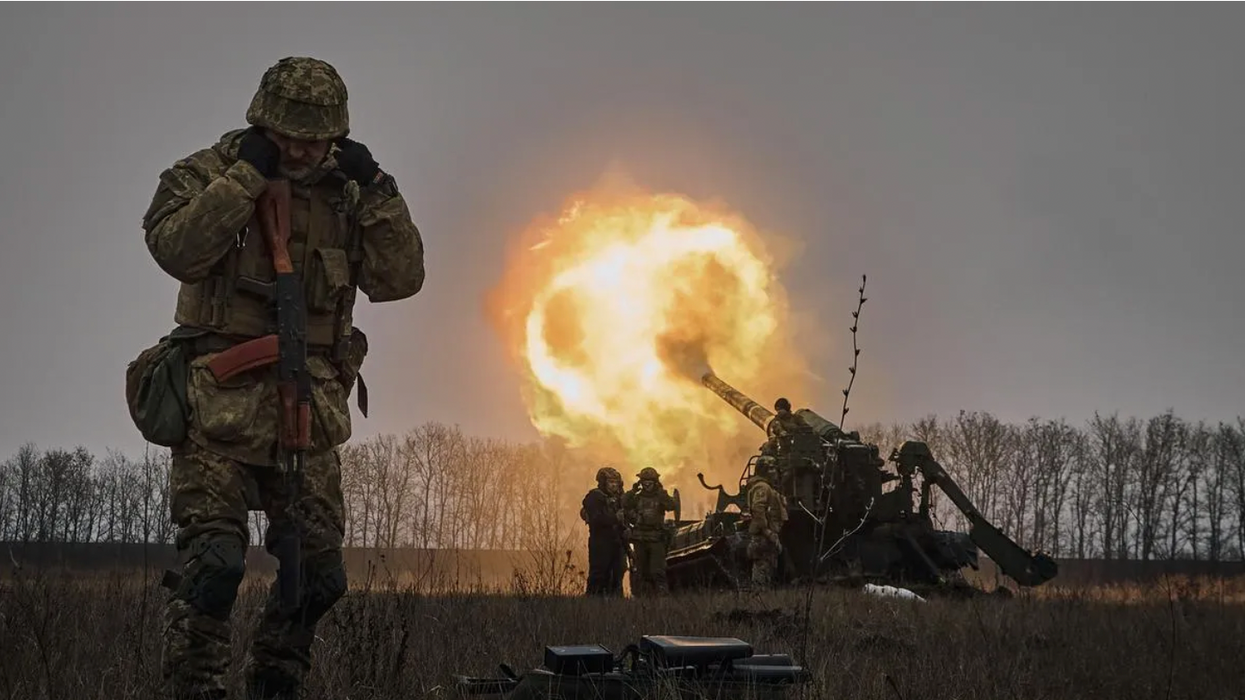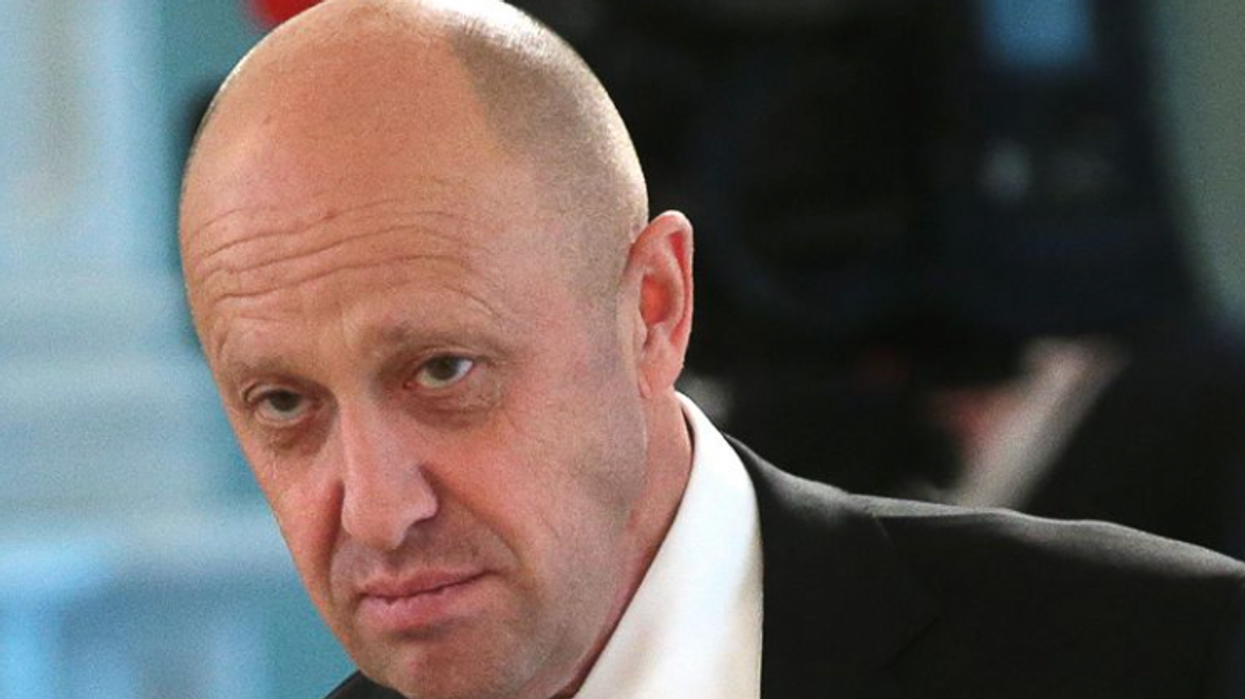News about Bakhmut has leaked out of both Ukraine and Russia over the last few days, and while neither the news nor the situation on the ground is definitive, it’s significant enough to take a look at. In fact, the reason we’re still watching the battle for Bakhmut so closely is perhaps the most significant thing of all.
As a city, Bakhmut is not terribly important. Before the war, the place had a population of about 70,000. There is a massive salt mine near the town that contains the largest underground space in the world -- it’s so big that Wikipedia tells us that a hot air balloon was once fired up and inflated inside the space.
Strategically, Bakhmut isn’t important either. The town sits on the road from Donetsk to Kyiv, but there are other ways to get to and from both places. It does stand between the Russian border and the cities of Kramatorsk and Slovyansk, which have served as key Ukrainian military regional headquarters and resupply centers, and if Bakhmut were to fall to Russian forces, the two strongholds to the west would become more vulnerable to Russian attack.
But Bakhmut’s major importance in both Ukraine’s war against Russian aggression and Russia’s war to take over Ukraine is symbolic. What it amounts to is this: The Russian military – read: Vladimir Putin – decided about six to eight months ago that it was important to take Bakhmut, and they’ve been at it ever since. Bakhmut was one of the towns taken back from Russian forces by Ukraine when its army executed its big offensive last September that took about 3,500 square miles of the Kharkiv region in northeastern Ukraine that Russia had held since the beginning of the war in February/March of 2022.
The Ukrainians decided at the same time it was important for them to hang onto the town. There has been a bloody war going on for this small piece of the Ukrainian steppes ever since.
It has become clear to military analysts that Ukraine’s decision about Bakhmut was smarter than Russia’s, because Ukraine has managed to inflict about 100,000 casualties on Russian forces since the battle began – in fact, there are some estimates that Russia has lost that many troops since January of this year.
The battle lines in the war have been static along a 600-mile front since Ukraine took Kherson in November. There have been skirmishes and small battles all along the front for about eight months, but neither side has been able to strike forcefully enough to move the other from its defensive positions. Russia has dug defensive trenches everywhere. Satellite photos of the area to the east of Kherson show an elaborate network of Russian trenches defending its land bridge to Crimea and the cities to the east of Kherson, Melitopol and the port of Mariupol.
Russia spent the winter digging similar trench networks to defend the land it has taken in the regions of Donetsk and Luhansk. In fact, the Russian strategy at this point, if it can be called one, is to defend the strip of eastern Ukraine it took last year and spend the rest of its time killing Ukrainian civilians in the major cities in Ukraine’s center and west, including Kyiv, Odessa and less often Lviv, near the border with Poland.
Some invasion, huh? It’s been established that Putin was under the misinformed delusion that he could use an invading force of about 140,000 and take Kyiv within a week, establish a puppet government and essentially turn Ukraine into a piece of Russia that would be rich with mineral and agricultural wealth, not to mention the fact that if the invasion had succeeded, he would have been able to station his military forces, including his army, air force, and navy, right on Europe’s doorstep.
Didn’t work. By some estimates, Russia has lost as many as 200,000 soldiers, either wounded or killed, since the war began. The interesting thing about those figures is this: when a Russian soldier is wounded, he’s off the battlefield for good, because Russia does not have the kind of military field hospitals and medical technology to patch people up and put them back in the fight.
So, there they are, stuck in relatively tiny Bakhmut, fighting because Putin told them to stay there and fight until they take the town. Somebody in the Ukrainian military is very, very smart, because the decision to defend Bakhmut has turned out to be brilliant. Ukrainian soldiers are fighting for a town that is theirs. They know the town and the surrounding region much, much better than the Russian soldiers sent there to fight. So, they’ve been sitting back for the last six months and picking when and where they will hit Russian units, be they squads, platoons, or companies. They have used drones they are producing themselves to target individual Russian soldiers or small groups of them, and then they have taken U.S. supplied 155 mm howitzers and HIMARS short-range missiles and hammered them to great effect.
There are estimates that the kill-ratio in the battle of Bakhmut has been 7 to 1, seven Russians killed for every Ukrainian. It could even be better than that, but even at those numbers, Russia has been spending a whole lot of soldiers in order to take a few blocks of Bakhmut here, a few blocks there, and by any realistic military measurement, they haven’t accomplished a thing.
Recently, there have been reports that Ukrainian forces have re-taken land to the north and south of Bakhmut and have pushed Russian forces out of some of the central areas of the town. This is very difficult to read from here in Milford, Pennsylvania, but any news of Ukrainian movement is good news. The Institute for the Study of War (ISW) has reported that Russian forces have pulled back from positions they had held both within the town of Bakhmut and to its south and north.
Yevgeny Prigozhin, the Russian billionaire who runs his own private army called the Wagner Group, recently made a video on YouTube complaining that regular Russian forces consisting of new recruits were retreating and leaving his Wagner Group units to fight for Bakhmut alone. Prigozhin stood next to a pile of bodies of Wagner Group soldiers and excoriated Russian Defense Minister Sergei Shoigu and General Valery Gerasimov, appointed a few months ago by Putin to run his war in Ukraine.
Complaining that his Wagner soldiers don’t have enough supplies of ammunition, Prigozhin, referring to Putin’s top military officials, shouted, “You animals are hanging out in expensive clubs. Your children are enjoying their lives, making videos for YouTube. Do you think that you are the masters of this life and that you have the right to control their lives?” Pointing to the bodies of dead soldiers, he ranted, “Here are the guys from PMC Wagner who died today. The blood is still fresh. We have a 70 percent ammo shortage! Shoigu! Gerasimov!"
Analysts are reading these explosions by Prigozhin in several ways. Putin may have commanded his friend Prigozhin to “take Bakhmut” for him months ago, and now that it is becoming evident that the Wagner Group has not only failed, but lost a good percentage of its fighters, Putin is abandoning him and positioning himself to blame an eventual loss of the battle of Bakhmut on Prigozhin. This may be because Putin sees Prigozhin as a political rival at this point, Prigozhin having turned his Wagner Group into what amounts to an armed political party.
Or the situation in Bakhmut could in fact be so desperate that there simply isn’t enough ammunition and regular Russian army forces to back up the Wagner Group. Prigozhin has accused regular Russian forces of “fleeing” the battle for Bakhmut, and this indeed may be the case. Russia has rushed fresh recruits into the battle in recent months, where they have been chewed up by Ukraine’s precision artillery and rocket strikes. The Wagner Group forces have been caught in the middle.
And there is the Ukrainian perspective. Ukraine has not made a secret of the fact that they are preparing for the long-anticipated spring offensive. Ukraine may have kept the battle for Bakhmut going this long by fighting for every inch of the town in order to force Russia not only to spend so many Russian bodies in the fight, but to center its defenses in advance of the Ukrainian offensive around Bakhmut, while the main Ukrainian push may end up being elsewhere. There is a report by ISW that over the last few days Ukraine hit Russian resupply and logistics targets around the city of Luhansk with British-supplied Storm Shadow cruise missiles. It’s only about 60 miles from Bakhmut to Luhansk. Ukraine may be softening up the area directly to the east of Bakhmut because they are planning a massive strike directly through Bakhmut…
Or it may be a feint, attempting to cause Russia to move in more forces to defend east of Bakhmut, while Ukraine has plans to make its big offensive push as far away as Kherson. Nobody knows…or at least, only President Zelensky and his top military commanders know.
But that’s the nature of war. The famous phrase “the fog of war” came into being for a reason. War is a fog. That some of the fog is comprised of the mist of blood and bone left by exploded bodies is as tragic as it is real in a war. We will know more when the fog clears, but as of now, we don’t know when that will be.
Lucian K. Truscott IV, a graduate of West Point, has had a 50-year career as a journalist, novelist, and screenwriter. He has covered Watergate, the Stonewall riots, and wars in Lebanon, Iraq, and Afghanistan. He is also the author of five bestselling novels. You can subscribe to his daily columns at luciantruscott.substack.com and follow him on Twitter @LucianKTruscott and on Facebook at Lucian K. Truscott IV.
Please consider subscribing to Lucian Truscott Newsletter, from which this is reprinted with permission.












